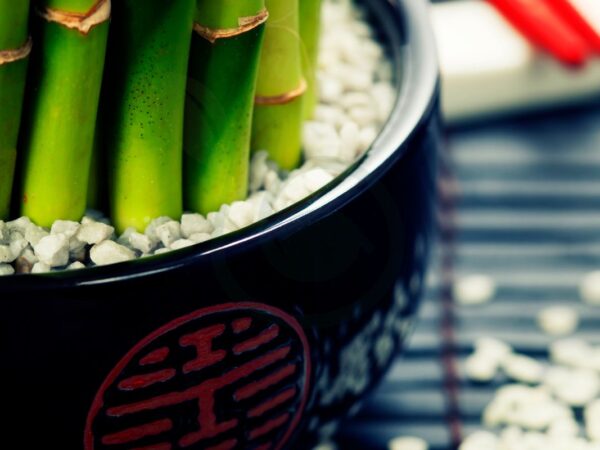Curious about the majestic sycamore trees and their towering presence? Wondering how tall these natural giants can grow? Let's delve into the historical context of sycamores, exploring their impressive height potential. Native to North America, these trees have long fascinated nature enthusiasts with their soaring stature and robust presence in various landscapes. From ancient civilizations admiring them for their grandeur to modern conservation efforts preserving these arboreal wonders, sycamores hold a significant place in our ecological history. Join us as we uncover the heights that these magnificent trees can reach and gain a deeper appreciation for their role in our environment.
Key Takeaways
- Sycamore trees can grow up to 100 feet tall, providing ample shade and beauty in landscapes.
- To promote healthy growth, plant sycamore trees in well-drained soil and full sun exposure.
- Regular watering, mulching, and pruning are essential for caring for sycamore trees and ensuring their longevity.
- Overcoming challenges like anthracnose disease or sycamore lace bugs requires early detection and appropriate treatment.
- Propagation methods such as seed collection or stem cuttings can be used to expand sycamore tree populations.
- By following proper planting, care, and maintenance techniques, you can enjoy majestic sycamore trees in your surroundings.
Understanding Sycamore Trees
Appearance
Sycamore trees stand out with their unique bark, displaying patches of white, gray, and brown. Their large leaves are palmate-shaped with five lobes. During autumn, these shade tree leaves transform into vibrant hues of yellow, orange, and brown.
The appearance of sycamore trees is distinctive due to their mottled bark and large palmate-shaped leaves that change color in the fall.
Different Types
American Sycamores are native to North America and can grow over 100 feet tall. They boast a broad canopy providing ample shade. London Planetrees, a hybrid species resulting from American sycamores and Oriental plane trees crossbreeding, share many characteristics but are more disease-resistant. Planted widely in urban areas for pollution tolerance.
-
Pros:
-
American Sycamores reach impressive heights.
-
London Planetrees resist diseases better.
-
Cons:
-
Maintenance required for both types.
-
Examples:
-
Central Park in New York City features American Sycamores.
-
London Planetrees line many city streets worldwide.
Lifespan
Sycamore trees typically live between 150 to 600 years on average. Environmental factors and maintenance practices significantly impact their longevity. With proper care like pruning and watering regularly, sycamores can thrive for centuries.
Factors such as environmental conditions play a crucial role in determining the lifespan of sycamore trees alongside regular maintenance practices like pruning.
Average Height of Sycamore Trees
Growth Rate
Sycamore trees are known for their rapid growth, expanding at a pace of 2 to 3 feet annually when provided with ideal conditions. This speedy growth is more pronounced in younger trees compared to older ones. For instance, a sycamore tree planted in an area with ample sunlight and proper soil drainage can quickly shoot up several feet each year.
Factors Influencing Height:
- Light Conditions: Full sun exposure is crucial for sycamore trees' optimal development. While they can tolerate some shade, it may hinder their growth potential.
- Soil Type: Sycamores thrive in diverse soil types like clay, loam, and sandy soils. Proper drainage is vital to prevent water accumulation that could lead to root issues.
Soil Type
The type of soil plays a significant role in determining how tall a sycamore tree can grow. These trees flourish best in soils that drain well and allow the roots access to oxygen. By avoiding waterlogged conditions through suitable soil types such as loamy or sandy soils, you provide the tree with an environment conducive to reaching its maximum height potential.
Factors Influencing Height:
- Light Conditions: Optimal sunlight exposure ensures robust foliage growth and overall healthy development.
- Soil pH Level: Slightly acidic to neutral pH levels are preferred by sycamores for thriving without facing challenges like stunted growth due to unfavorable soil acidity.
Ideal Conditions for Growth
Light Requirements
Sycamore trees need a minimum of 6 hours of direct sunlight daily to thrive. Without enough light, they may grow weak and have sparse foliage. It's best to plant them in open areas away from structures that can create shade.
- Pros:
- Ensure strong growth and lush foliage.
- Promote overall tree health and vitality.
- Cons:
- Limited planting locations due to sunlight requirements.
Suitable Soil
While sycamore trees can adapt to various soil types, they prefer moist, fertile soils. Sandy or clay soils may need amendments for better drainage and nutrient availability. Regularly checking the soil's moisture content and pH level is advisable.
- Key Information:
- Optimal growth in moist, fertile soils.
- Amendments needed for sandy or clay soils.
Watering Needs
Frequency
Sycamore trees benefit from deep but infrequent watering sessions. Established trees typically require watering every 7 to 10 days during dry spells. Younger trees might need more frequent watering until their root systems mature.
- Deep watering promotes healthy root development.
- Avoid overwatering which can lead to root rot issues.
Amount
These trees generally require around 1 inch of water weekly, including rainfall amounts. Providing deep saturation of the root zone through watering is more beneficial than frequent shallow sessions. Adjust the watering volume based on weather conditions and soil moisture levels.
- Saturate roots with deep watering techniques.
- Monitor weather patterns for adjusting water amounts accordingly.
Temperature and Humidity
Sycamore trees show adaptability across a wide range of temperature and humidity conditions, tolerating both hot summers and cold winters well. Adequate humidity levels are crucial during dry periods as they help prevent leaf desiccation.
- Examples:
- Withstand high temperatures in summer months.
- Adapt well to low humidity environments during winter seasons.
Planting Sycamore Trees
Best Time to Plant
The best time to plant sycamore trees is during early spring or late fall. Avoid extreme heat or frosty periods as they can stress the tree. During the dormant season, typically in spring and fall, plant sycamores to allow them to establish strong roots before facing harsh conditions. This planting strategy helps the tree adapt better.
When you choose the right time for planting, your sycamore will have a higher chance of thriving. For example, avoid planting during scorching summers when the sun's intense heat can be too much for young trees. Instead, opt for milder temperatures that support root development without subjecting the tree to extreme weather conditions.
Planting Process
To ensure successful growth, dig a hole twice as wide as the root ball but keep it shallow enough not to cover the root collar. Carefully remove the tree from its container or burlap wrapping while preserving its roots' integrity. Backfill around the roots with soil gently but firmly to eliminate air pockets that could hinder growth.
By following these steps correctly, you provide your sycamore tree with an optimal environment for establishing itself and growing healthily over time.
Initial Care
After planting your sycamore tree, apply organic mulch around its base; this helps retain moisture and suppresses weed growth near it. Throughout its first year post-planting, monitor your sapling regularly for signs of stress or disease that may impede its growth potential.
Remember also to shield young trees from severe weather conditions and protect them against potential herbivores like deer who might nibble on tender leaves.
Caring for Sycamore Trees
Watering Guidelines
Sycamore trees need deep watering right after planting to establish their roots. During dry periods, especially in the first year, it's crucial to provide extra watering. Monitoring rainfall and soil moisture levels helps determine when to adjust the watering frequency.
To keep sycamores healthy, ensure they receive sufficient water by following these guidelines:
- Water deeply immediately after planting.
- Provide supplemental irrigation during dry spells.
- Adjust watering based on rainfall and soil moisture levels.
Fertilizing Tips
In nutrient-rich soils, sycamore trees usually do not require regular fertilization. However, if needed, apply a balanced slow-release fertilizer in early spring before new growth appears. Excessive fertilization can result in rapid but weak growth.
Here are some tips for fertilizing sycamore trees effectively:
- Apply a balanced slow-release fertilizer in early spring if necessary.
- Avoid excessive fertilization to prevent weak growth.
- Fertilize only when needed and follow recommended guidelines.
Pruning Techniques
Pruning is essential for maintaining healthy sycamore trees. Late winter or early spring when the tree is dormant is the best time for pruning. Removing dead, damaged, or crossing branches improves tree structure and airflow while preventing disease spread.
When pruning your sycamore tree, remember these techniques:
- Prune during late winter or early spring while the tree is dormant.
- Remove dead, damaged, or crossing branches carefully.
- Avoid heavy pruning as it may lead to excessive sprouting.
Overcoming Challenges
Common Pests and Diseases
Sycamore trees can face challenges like sycamore anthracnose, a fungal disease causing leaf blight and twig dieback. Another issue is powdery mildew, which results in a white powdery coating on leaves and stems. Insect pests such as aphids, scales, and borers may also infest sycamores but are usually manageable with proper care.
To combat these problems, ensure your sycamore trees receive adequate care to prevent diseases like anthracnose or powdery mildew. Regularly inspect the foliage for any signs of disease or pest infestation. If detected early, you can take appropriate measures to mitigate the issues before they escalate.
-
Pros:
-
Proper care can manage common pests and diseases.
-
Early detection helps prevent severe damage to the tree.
-
Cons:
-
Neglecting tree health may lead to extensive damage.
-
Some treatments for pests and diseases can be time-consuming.
Overwintering Strategies
Sycamore trees exhibit remarkable hardiness against cold winter temperatures. To protect them during winter months, consider applying a layer of mulch around the base of the tree; this helps insulate the roots from freezing conditions. Avoid excessive pruning in late summer or fall since it might stimulate new growth vulnerable to frost damage.
During colder seasons, safeguard your sycamore trees by implementing overwintering strategies like mulching around their base for root insulation against freezing temperatures. By understanding their resilience to cold weather, you can effectively prepare your trees for harsh winter conditions.
- Steps:
- Apply a layer of mulch around the base before winter sets in.
- Monitor weather forecasts regularly to anticipate extreme conditions.
Propagation Methods
Seed Propagation
Sycamore trees can be grown from seeds collected during autumn. To start, gather mature sycamore seeds and soak them in water for 24 hours. This soaking period helps improve the chances of germination by softening the seed coat. After soaking, plant the seeds in a well-draining potting mix at a depth of about one inch. Keep the soil consistently moist to support germination.
When planting sycamore tree seeds, ensure they receive adequate sunlight for optimal growth. Once sprouted, transplant the young seedlings into larger containers or directly into your garden once they have developed several sets of leaves.
Cuttings Propagation
Another method to propagate sycamore trees is through cuttings taken from healthy branches during late spring or early summer when new growth is still flexible but not too tender. After selecting a suitable cutting, dip its end in rooting hormone to encourage root development. Then plant it in a container filled with a well-draining rooting medium such as perlite or vermiculite.
To promote successful rooting, provide bottom heat using a heating mat and maintain high humidity levels around the cuttings by misting them regularly or covering them with plastic bags until roots develop. Once rooted, gradually acclimate the young plants to lower humidity levels before transplanting them into their permanent location outdoors.
Ensuring Healthy Growth
Regular Maintenance Tips
To ensure healthy growth of sycamore trees, it is essential to conduct regular maintenance. Inspect the tree often for any signs of disease, pests, or structural problems. Promptly remove any dead or damaged branches as they can impact the overall health of the tree. Annual mulching around the base helps in retaining moisture and providing essential nutrients.
- Regular inspection is crucial
- Prompt removal of damaged branches
- Annual mulching for soil health
Monitoring Growth and Health Tracking the growth and health of your sycamore tree is vital for its well-being. Measure its height annually to observe its growth rate over time. Keep an eye on leaf color, foliage density, and general vigor as these are indicators of tree health. If you notice a significant decline or unusual symptoms, do not hesitate to seek professional help from an arborist.
- Measure height yearly
- Check leaf color and foliage density
- Seek arborist assistance if needed
You've now learned about the fascinating world of sycamore trees - from their average height to the ideal conditions for growth, planting tips, caring techniques, challenges you might face, propagation methods, and ensuring healthy growth. By understanding these aspects, you're better equipped to nurture your sycamore tree effectively. Remember, providing proper care and attention is crucial for your tree to thrive and reach its full potential.
Now it's time to take this knowledge and put it into action. Whether you're planning to plant a sycamore tree in your garden or already have one that needs some TLC, implementing the insights you've gained will make a significant difference in the health and growth of your tree. Get out there and let your green thumb work its magic!
Frequently Asked Questions
How tall can sycamore trees grow?
Sycamore trees can reach impressive heights of 70-100 feet or more, resembling towering giants in the forest. Their majestic stature adds a grandeur to any landscape they grace.
What are the ideal conditions for sycamore tree growth?
Sycamore trees thrive in moist, well-drained soil and full sunlight. They prefer temperate climates with plenty of rainfall to support their lush foliage and robust growth.
When is the best time to plant sycamore trees?
The optimal time to plant sycamore trees is during the dormant season in late winter or early spring. This allows them to establish strong roots before facing the challenges of summer heat.
How do I care for my sycamore tree?
Ensure your sycamore tree receives regular watering, especially during dry spells, and periodic pruning to maintain its shape and health. Keep an eye out for pests or diseases that may affect its growth.
Can I propagate sycamore trees at home?
Yes, you can propagate sycamore trees through seeds or cuttings. However, it's essential to follow proper techniques and provide suitable growing conditions for successful propagation.
Image Source: Paid image from CANVA





